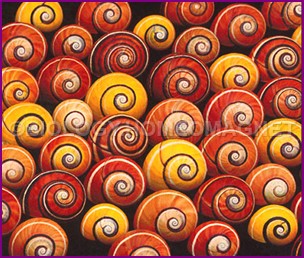Biology related pages:
Population genetics and evolution
Before our study about genetic variation we should have some idea about the relation of population genetics and evolution. A population may be defined as all individuals of the same species occurring in the same area at a particular time and the population genetics is the study of the frequencies of genes in populations. This represents an application of Mendelian genetics to Darwinian natural selection. Evolution takes place within populations, when the relative frequencies of different variations of gene change over time, such as, if there are two forms of a specific enzyme in a population, certainly there is evolution, provided the relative frequencies of the individuals possessing each form of enzyme change.
Sources of genetic variation
A population’s individuals share a number of important features but differ from one another in several ways. In general, no two members of a population are exactly alike. The differences of characteristics between members of the same species are called variation. So, we may say that the variation is the raw material of evolution. The agents of evolution are acting on this genetic variation. Therefore, a population to develop its members must possess variation. Both at phenotypic level and at the genotypic level the variation is observed. The natural selection acts on the genotypic level. Hence, genetic variation is the pre requisite of evolution. In other words, we can say, evolution requires genetic variation.
There are five basic mechanisms which cause variation at the genetic level, which are briefly discussed as follows: --
Mutation

A mutation is a sudden heritable change in characteristic of the organism. In a random fashion these mutations occur and it is irrespective to the adaptive needs of organisms. Mutations are mostly harmful or neutral to the organism. However, if the environment changes, the alleles, which were previously harmful or neutral, may become beneficial. As on date mutation rate is observed to be slow. Normally one mutation occurs in one million. Still this mutation rate is quite sufficient to create considerable genetic variation.
The changed environment does not induce mutation; rather it only selects the pre-adaptive mutation which already existed in the population. Mutation restores those alleles in the population which are removed by the other evolutionary agents. Thus, mutation not only creates genetic variation, but also helps in maintaining variations within population. Mutations also introduce new genes and alleles into the gene pool. In which new genes or variants of alleles are added or removed is called the gene pool.
Recombination
The reshuffling of gene combination which in future provides new combinations of existing gene and alleles is called recombination. There are different ways of recombination of genes and alleles, such as independent assortment of chromosomes during mitosis, crossing over during meiosis and fertilization, random fusion of gametes and also within genes. So, it is easy to say that recombination adds new alleles and allelic combinations to the gene pool. Hence, as an agent of evolution the recombination acts.
Gene Migration

In the case of same sepsis sometimes few populations are completely isolated from the other populations and also migration occurs between the populations of a species. If the migrating organisms breed within the new populations, then the immigrants will transfer new alleles to the local gene pool of the host population. This transfer of alleles to the local gene pool of the host population is called gene migration. If the migrated species is closely related to the host species, then fertile hybrids may develop from inter-specific mating.
Genetic drift
The random changes or errors in the allele frequency which is caused by chance alone are called genetic drift. It is a binomial sampling error of the gene pool. Sampling errors or changes often lead to the elimination of certain alleles and fixation of some genes. In this way, it reduces the genetic variation of the population. In other words, we can say that the elimination of certain genes in a small isolated population either due to intensive inbreeding causes permanent fixation of some genes or death of a small section of population by natural calamity resulting in its removal. The effect of genetic drift is large in a small population.
Natural Selection :
It is the most important evolutionary process genetic variation which brings about changes in the allele frequencies and favors adaptation as a product of evolution. Natural selection also checks the disharmonizing effects of the other processes that are not leading to adaptation. The individuals having pre-existing classes of genetic variants in the gene pool are well adapted and survive for longer period and produce more offspring. This is known as differential reproduction. Through such differential reproduction, adaptive alleles are selected and transferred to the next generation. Thus, increase in frequency occurs over subsequent generations. In case of less adapted alleles, present in with less productivity individuals fail to select. According to Darwinian terms, survival and fertility mechanisms which promote differential reproduction are known as selection. In modern terms, selection is the consistent differences in the contribution of various genotypes to the next generation. So we can say that natural selection causes a change in allelic frequencies of a population.
